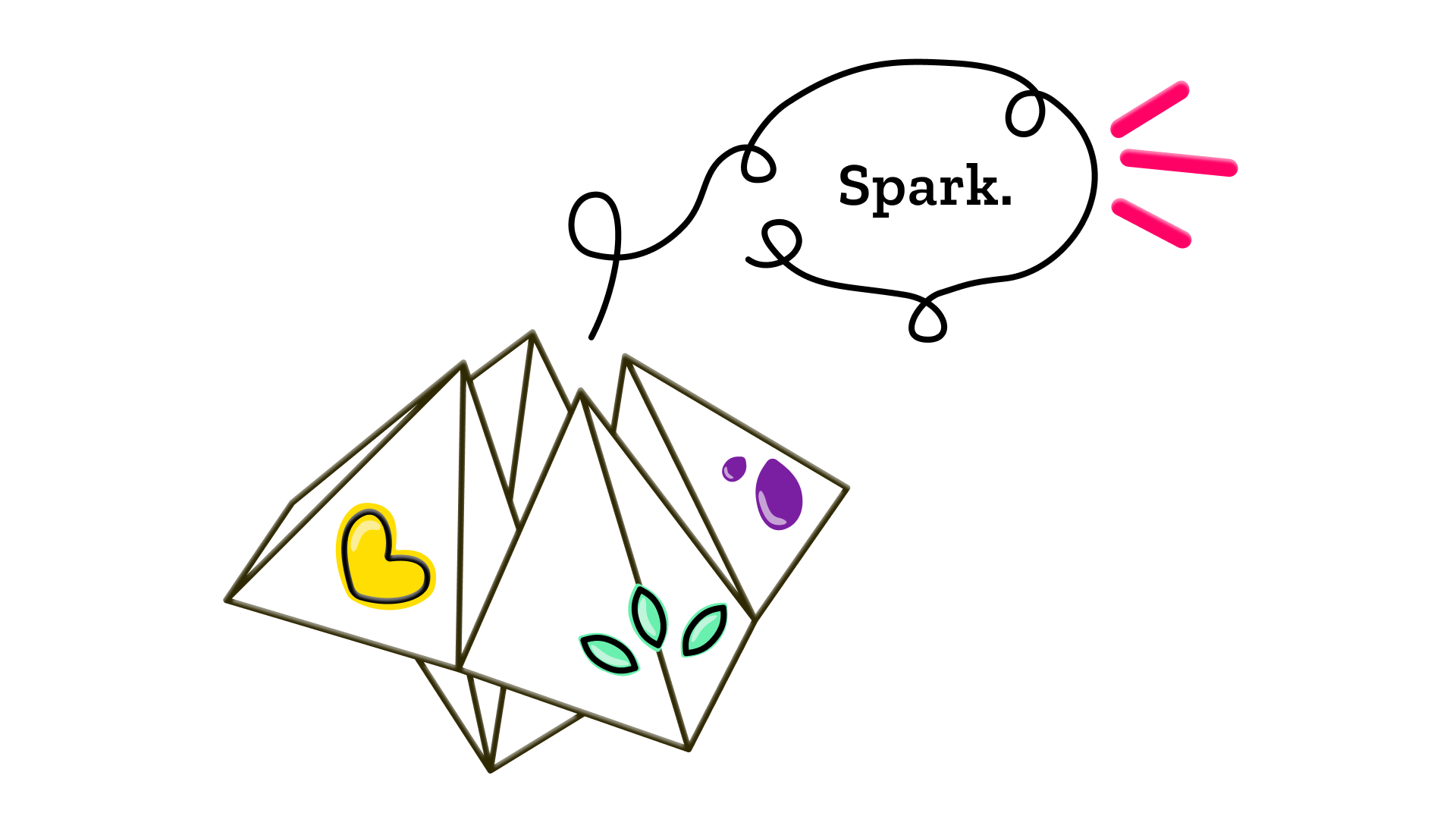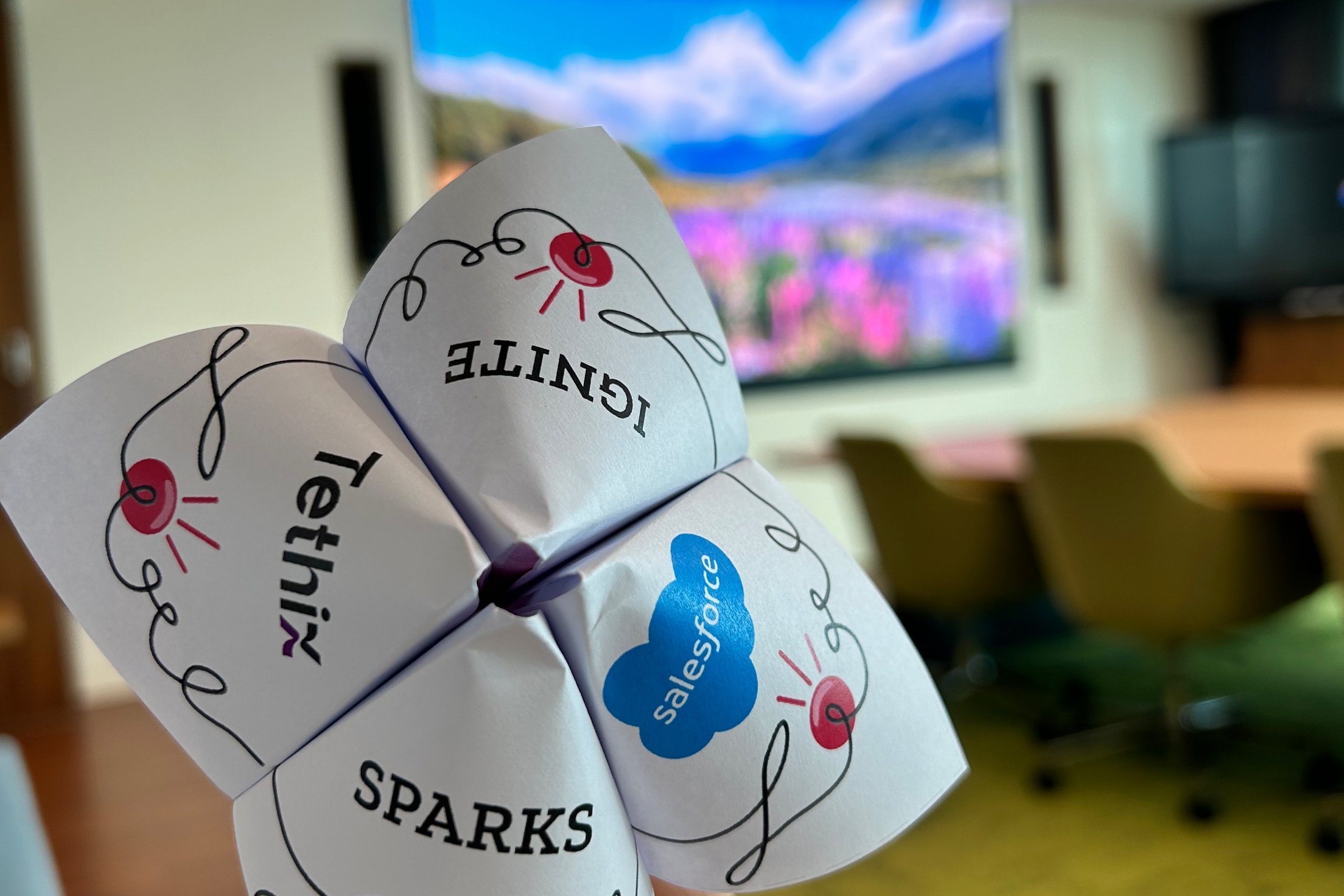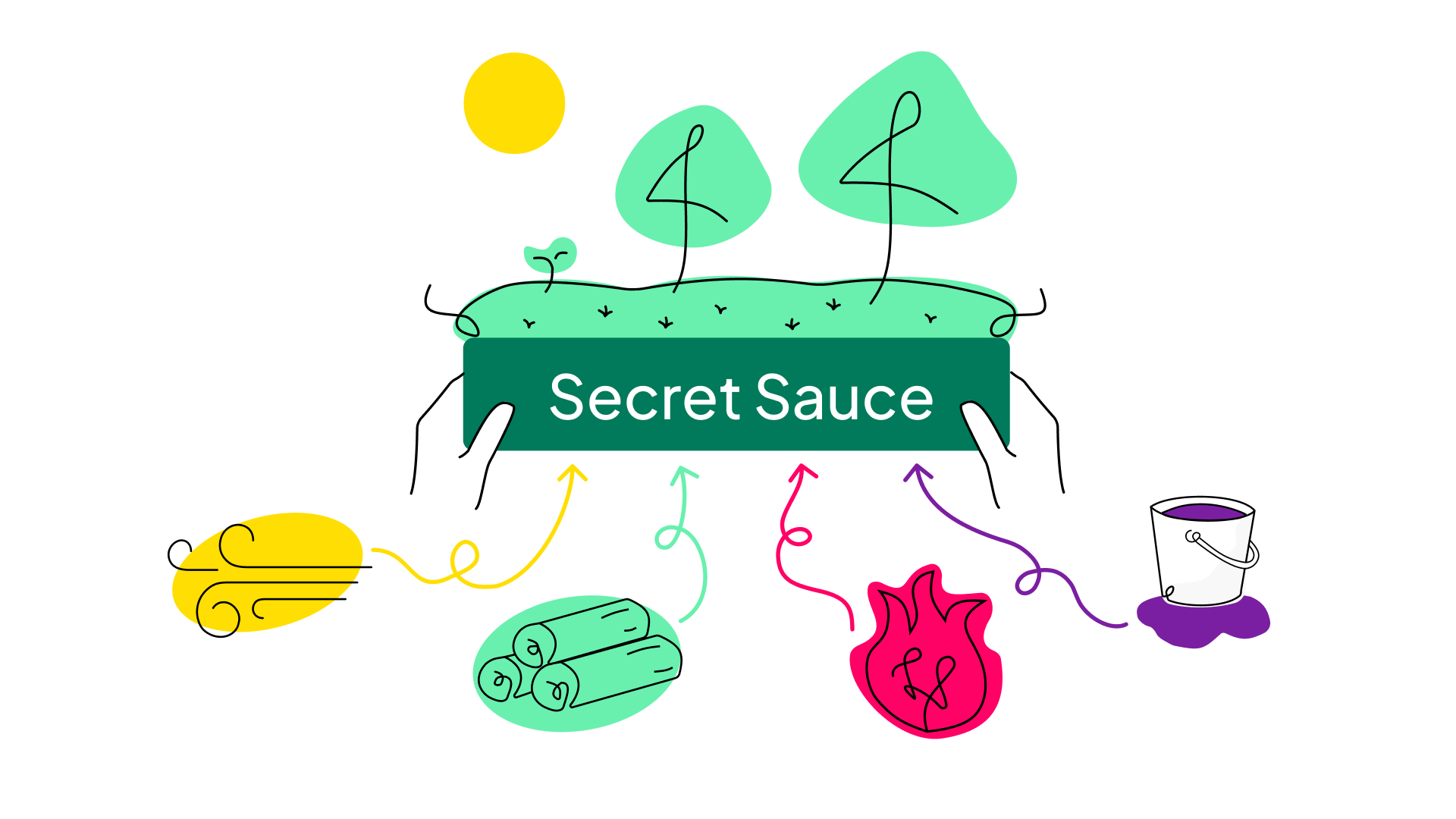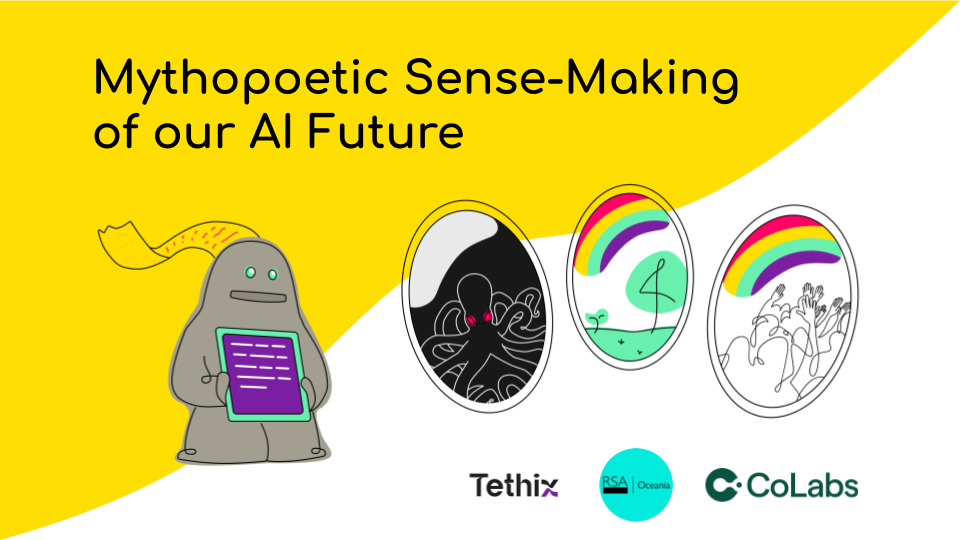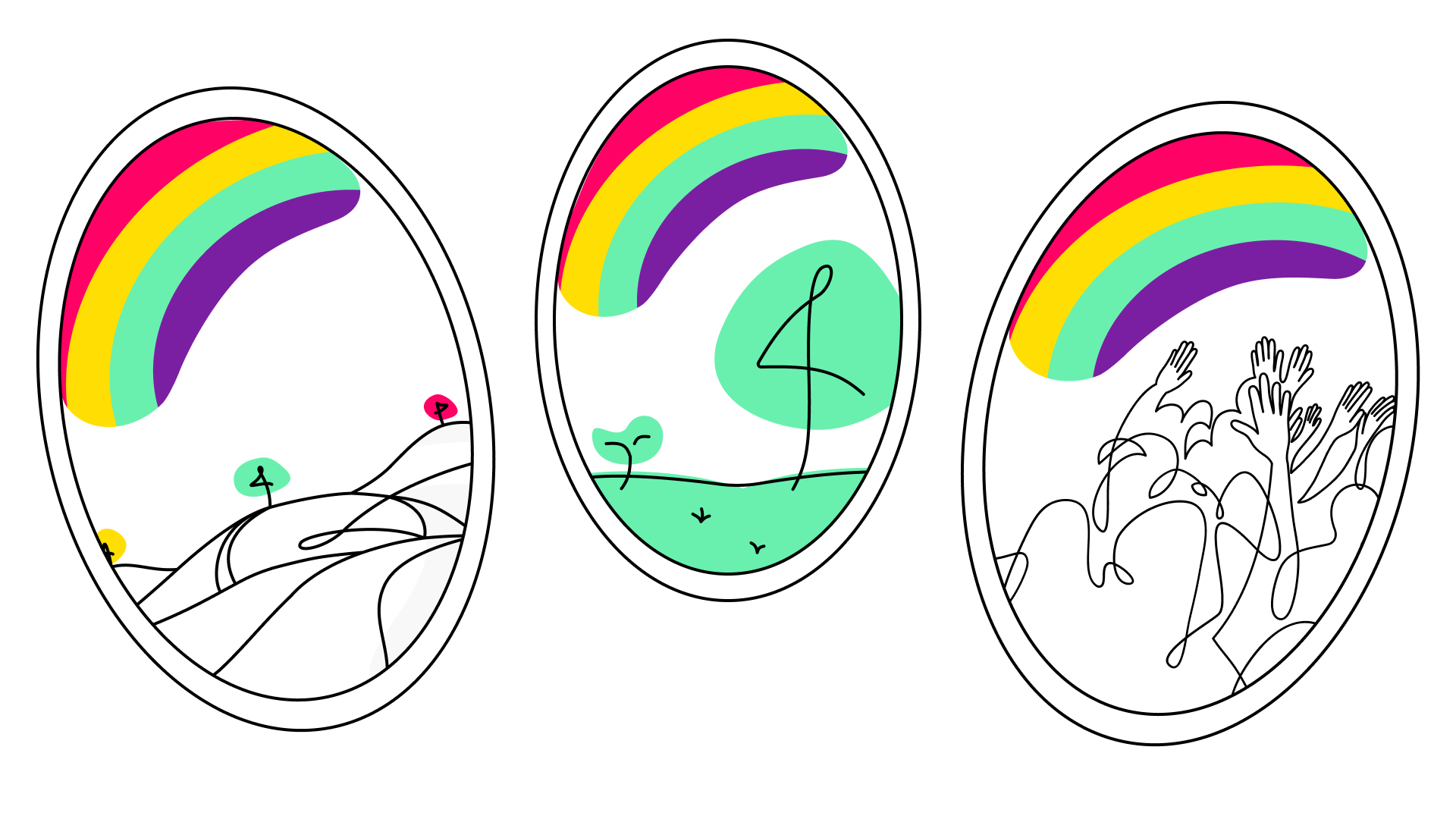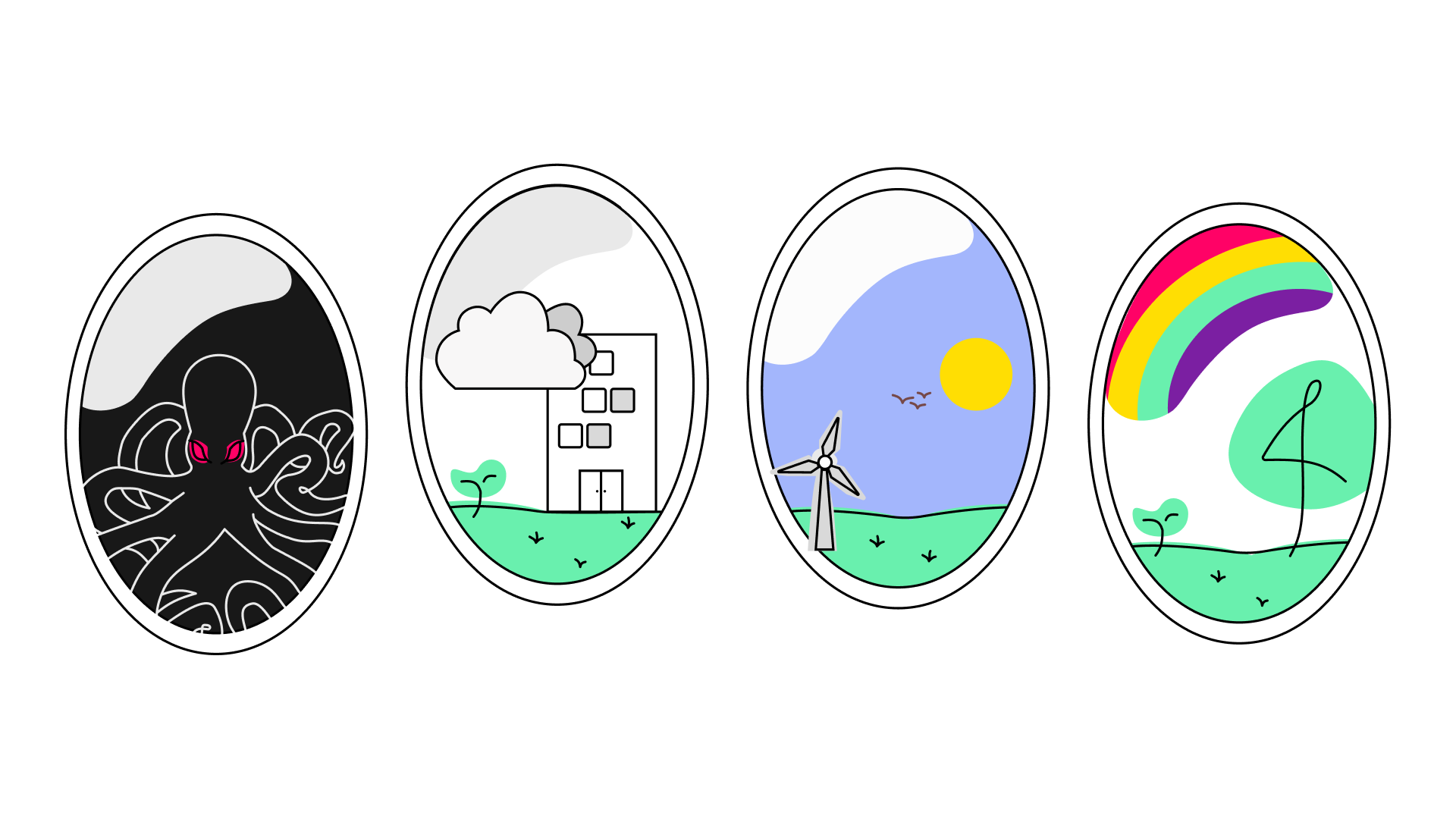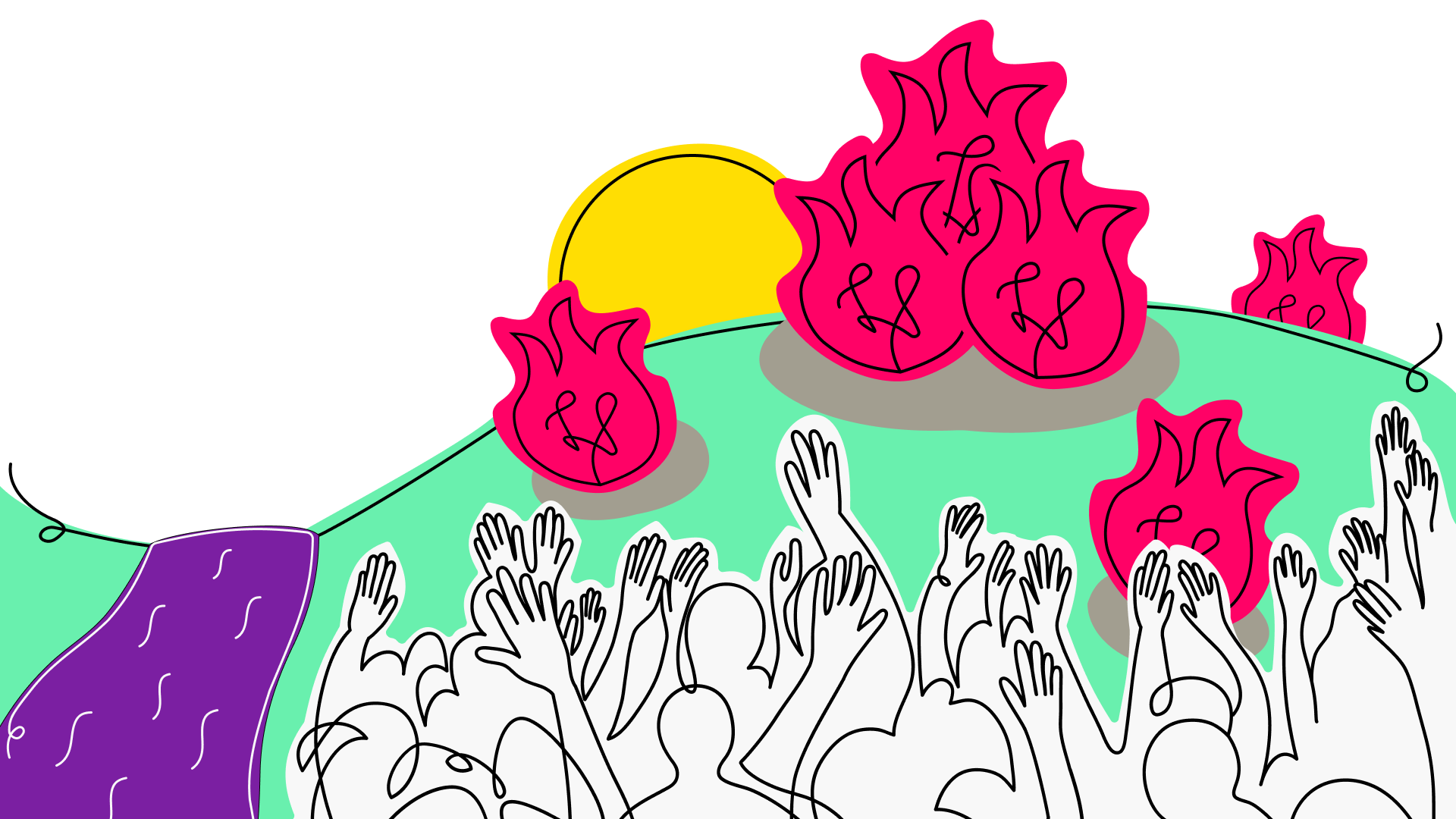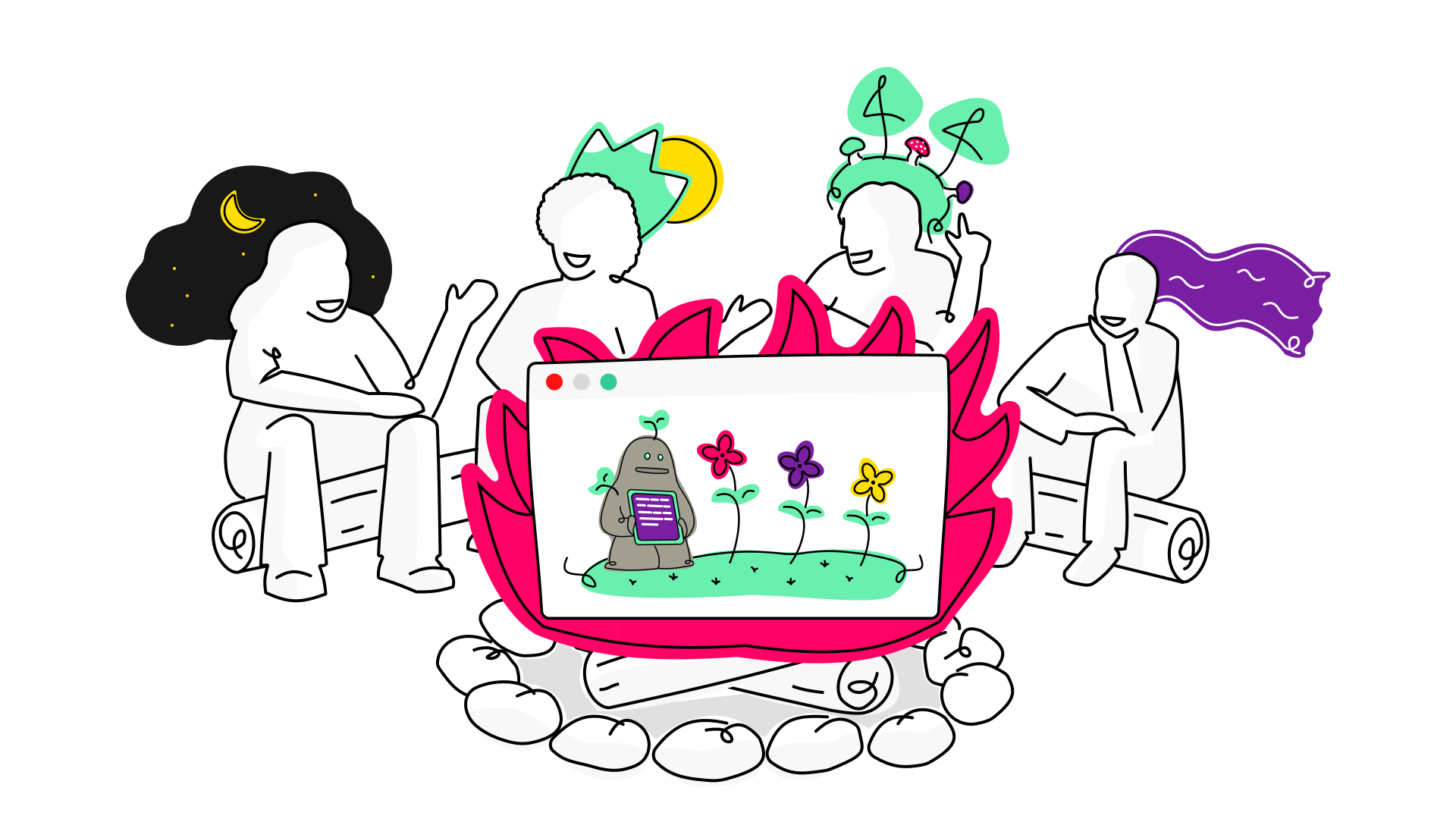Before you think I’ve lost my marbles: I’re not talking about the kind of cliché obsessive, bordering on disturbing, kind of romantic love that permeates our movies and love songs. But a deeper human capacity and need for love that can take different shapes and forms. Loving what you are contributing to the world, love for other humans and species, love of nature. In the Rainbow Mirror, we started seeing glimpses of how AI might help us build technology that offers us freedom to do more of the things we love. Technology that helps us develop our capacity for love instead of reinforcing the stories of separation from nature and each other.
This was the unexpected, yet in hindsight, seemingly obvious, theme we discovered in the event Mythopoetic Sense-Making of Our AI Future, which we hosted in partnership with RSA Oceania and Co-Labs. With this event, we wanted to offer a different exploration of the role AI might play in shaping our future as part of Australia’s AI Month.
As part of AI Month – and what is shaping to be an AI Year – you have the opportunity to attend countless talks and panels with experts exploring different aspects of AI. But most of these focus on a specific narrative, with “AI for productivity”, “harms of AI”, “AI regulation” some of the most common themes. With our Mythopoetic Sense-Making event, we wanted to open up the space to explore different stories, while also learning from ancient wisdom and stories.
Our event connected a small, diverse and intimate group of voices joining us from Co-Labs Melbourne on the land of Traditional Custodians, the Boon Wurrung and Wurundjeri peoples of the Kulin Nation, and online from Australia, Europe, and the US.
To better understand how we ended up exploring the story of love, allow me to share some highlights of the journey that led us there.
What is mythopoetic sense-making?
As Mat explained in his opening spark, the term ‘mythopoetic’ comes from ‘mythos,’ meaning myth, and ‘poiesis,’ meaning creation. It refers to the making and shaping of stories and narratives. Mythopoetic sense-making, then, is about using the power of myth and storytelling to create meaning and understanding, especially in contexts that are complex or unknown. Which is why we believe that mythopoetic sense-making is a great tool to explore the complexities of the fire of generative AI and the impacts it is having and might still have on society, ethics, and our collective future.
Instead of a traditional lecture, we decided to spark the participant’s moral imagination by telling the story of Fire stories and AI golems – a story you can now also read or watch as part of our new Tethix Storytime series. This story follows the mythopoetic threads from the initial theft of fire to gen AI golems (a character you might be familiar with from our Newmoonsletter).
Philipa Duthie, the director of RSA Oceania, added another spark by reminding us that modern neuroscience tells us that humans think in narrative form and that human cognition is a narrative process, “a perpetual storying of the world around us”.
The stories we tell shape our view of the world, and the consequences of the metaphor of nature as a machine that started emerging in the 16th, 17th and 18th century during the Scientific Revolution and the Age of Enlightenment. The story of separation from nature that developed as a result led to a way of thinking that focuses on extraction and exploitation. This led to the racist ideology of white supremacy, the genocide of Indigenous people across the world, and the enslavement of millions of Africans to the Americas.
So far, Big Tech and AI have supported this modern story of exploitation of natural resources and people, including the exploitation of our creative works and data for training AI models, and continues supporting the story of individual human productivity as the ultimate goal to aspire to. Slave-like conditions in the Democratic Republic of Congo and elsewhere still represent the backbone of the tech industry, even though these are stories we would rather ignore.
But new stories are emerging, and Philipa shared some highlights from ReGeneration Rising, an RSA series of explorations on how regenerative approaches can help us collectively re-design our communities, cities, and economies, and create a thriving home for all on our planet.
As a warm-up to the sense-making activities – the focus of the event – Mat brought us back to the rich tapestry of stories of fire stolen and fire shared from the First Nations peoples of Australia with the oldest living culture. (If you’d like to explore some stories across Country, we recommend starting with the collection Traditional fire stories, compiled by Fire & Rescue NSW, which you can read by yourself and to your children and family.)
Sense making of the gen AI fire
And if we think of gen AI as stolen fire, we can open interesting discussions: who was the fire of AI stolen from? Why was somebody guarding the fire, why didn’t they trust the humans? What are the benefits and risks of open-sourcing the fire, making it available to everyone?
This was the introduction to our first sense-making activity, in which we explored the Spectrum of Responses to gen AI fire. The responses we’ve seen so far range from freezing – ignoring the burning embers of gen AI fire and trying to put them out by throwing them into a bucket of cold water aka banning gen AI completely – to the wildfire zone of unbridled excitement, regardless of consequences. As a group, we engaged in oral sense-making and explored different stories and feelings gen AI evokes, acknowledging each of us might find ourselves on different sides of the spectrum in different roles we play.
We explored the themes of AI as an amplifier, the imagery of a hall of mirrors, the metaphor of a baby with superpowers that is just beginning to learn about the world, a dazzling new toy, the stories of automation and suffering in a transition period, and more. The stories that emerged were colored by our diverse perspectives, both in terms of geography and lived experiences.
Looking into a Rainbow Mirror and discovering love
This initial sharing served as a warm-up for the main sense-making activity of the day: moral imagineering with Rainbow Mirrors. After a brief introduction of the Taxonomy of Tethix Mirrors, we challenged ourselves to look into a Rainbow Mirror to try to see what a vision of a diverse, inclusive, and interconnected AI-enabled future might look like.
And, quite unexpectedly, we ended up seeing glimpses of love, of AI-enabled technology that supports our capacity and need for love. So, to paraphrase the formidable Tina Turner, what’s love got to do with AI? Our mythopoetic sense-making session was too short to provide a clear answer, but it definitely seems like this might be a question worth exploring further.
We’ll certainly continue our mythopoetic sense-making in the Newmoonsletter and other pathfinding activities, and you can still join us in the other events we’re hosting as part of AI Month, and listen to RSA’s ReGeneration Rising podcast to start exploring different stories.
We also want to thank Philipa from RSA Oceania and Sam from Co-Labs for hosting this Mythopoetic Sense-making session with us and all the participants who made time to look into a Rainbow Mirror together with us. We hope this is just the first of the many collective sense-making experiences as we begin to see the refractions in the Rainbow Mirrors of AI-powered futures more clearly.

